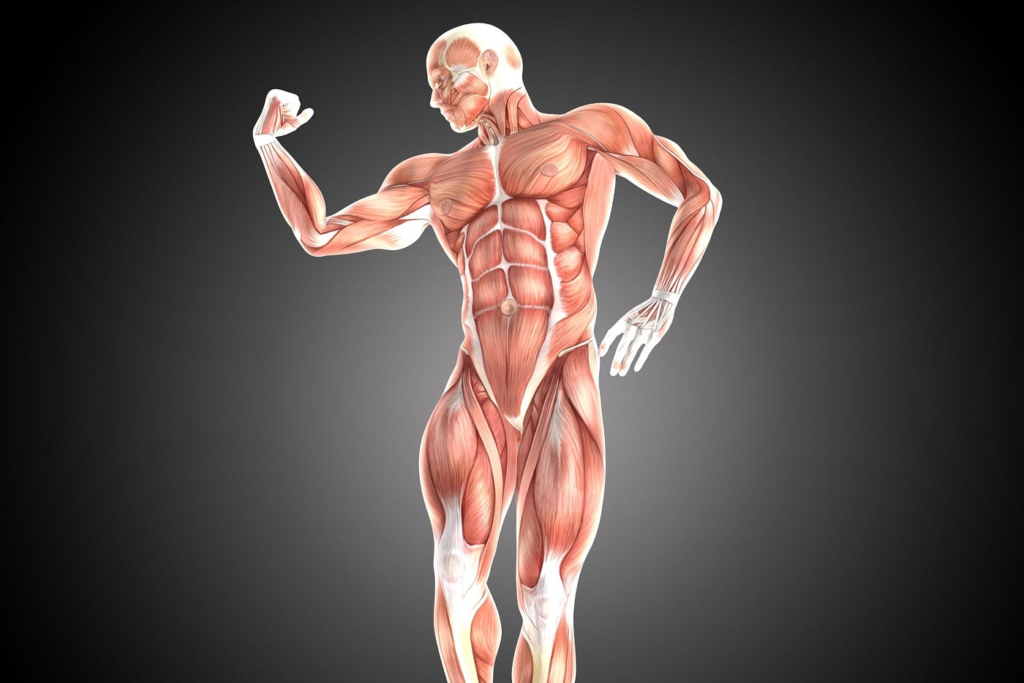
Introduction to Hypertrophy
If you’re looking to build muscle and achieve your fitness goals, you’ve probably come across the term “hypertrophy.” But what exactly does it mean? In simple terms, hypertrophy refers to the increase in muscle size through resistance training. It’s a key concept for bodybuilders, strength trainers, and anyone serious about their gym workouts.
Hypertrophy isn’t just about lifting weights; it’s about understanding how your body responds to different types of training stimuli. By exploring various hypertrophy workouts and techniques, you can unlock new levels of muscle growth and strength gains. Whether you’re a seasoned lifter or just starting out on your journey toward building muscle mass, this guide will delve into effective exercises and strategies that will help maximize your results.
Get ready to dive deep into the world of muscular development as we explore everything from myofibrillar hypertrophy to advanced training methods like drop sets and supersets. Let’s turn those fitness aspirations into reality!
The Three Main Types of Hypertrophy: Myofibrillar, Sarcoplasmic, and Hybrid
Hypertrophy isn’t just one-size-fits-all. It can be categorized into three distinct types: myofibrillar, sarcoplasmic, and hybrid.
Myofibrillar hypertrophy focuses on increasing the size of muscle fibers themselves. This leads to enhanced strength and density. Athletes who prioritize heavy lifting often pursue this type for maximum strength gains.
Sarcoplasmic hypertrophy, on the other hand, targets the fluid surrounding muscle fibers—known as sarcoplasm. This process increases endurance by expanding the energy storage capacity within muscles. It’s ideal for those looking to boost stamina during high-volume training sessions.
Then there’s hybrid hypertrophy, which combines elements of both methods. This approach allows for balanced development in muscle mass and functional strength while incorporating various resistance training techniques like supersets or drop sets. Each type serves unique fitness goals in your bodybuilding journey.

Benefits of Hypertrophy Training
Hypertrophy training offers a multitude of benefits for anyone looking to enhance their physique and performance. One major advantage is the increase in muscle mass, which not only improves aesthetics but also boosts metabolism. More muscle means more calories burned at rest.
Enhanced strength is another key benefit. As you build muscle through resistance training, your overall strength levels rise, enabling you to lift heavier weights and tackle challenging movements.
Additionally, these workouts improve endurance and functional fitness. This translates into better performance in daily activities and sports.
Mental resilience also receives a boost from regular sessions. The discipline required to follow a structured bodybuilding program fosters a strong mindset that can extend beyond the gym.
Hypertrophy training may lead to improved joint health by strengthening the muscles around them, offering greater stability during exercises and everyday tasks.
Top Workouts for Myofibrillar Hypertrophy
Myofibrillar hypertrophy focuses on increasing the density of muscle fibers, leading to greater strength and overall power. For those aiming for this type of growth, a well-structured workout routine is essential.
Start with compound movements like squats and deadlifts. These exercises engage multiple muscle groups simultaneously, maximizing strength gains. Aim for lower rep ranges around 4 to 6 per set with heavier weights.
Incorporate bench presses and overhead presses as staples in your regimen. They not only build upper body mass but also enhance functional strength.
Utilize progressive overload by gradually increasing weights or altering rest periods between sets. This approach stimulates continuous adaptation in your muscles.
Don’t forget about including pull-ups and rows for back development. A strong back supports all major lifts while promoting balanced muscularity throughout the body.
Mixing these workouts into a solid training split will help you efficiently achieve myofibrillar hypertrophy without overtraining.

Top Exercises for Sarcoplasmic Hypertrophy
Sarcoplasmic hypertrophy focuses on increasing the volume of sarcoplasm, the fluid portion surrounding muscle fibers. To achieve this, high-rep training and increased metabolic stress are key.
Start with compound movements like squats and bench presses. These exercises engage multiple muscle groups, promoting greater overall growth. Aim for higher repetitions—typically 8 to 15 per set—to maximize time under tension.
Isolation exercises also play a crucial role. Think bicep curls and tricep extensions to target specific muscles more intensely. Incorporate supersets for added intensity; pairing two exercises back-to-back can elevate your heart rate while boosting muscle fatigue.
Consider adding drop sets into your routine as well. This technique involves reducing weight after reaching failure in a set, allowing you to push beyond typical limits and stimulate further growth.
Focus on maintaining proper form throughout all exercises to prevent injury while enhancing effectiveness during your workouts.
Combining Both Types for Maximum Results
To achieve maximum muscle growth, blending myofibrillar and sarcoplasmic hypertrophy is essential. Each type targets different muscle components, resulting in well-rounded strength and size.
Incorporate compound movements like squats and deadlifts for myofibrillar gains. These exercises engage multiple muscle groups, promoting overall strength increases.
On the flip side, prioritize high-volume resistance training with isolation exercises such as bicep curls or leg extensions to enhance sarcoplasmic size. This approach boosts endurance while building muscular volume.
Strategically alternating between these methodologies can keep workouts fresh and challenging. Implement supersets or drop sets to maximize time under tension during your gym sessions.
Consider a well-structured hypertrophy split that allows you to target both types throughout the week. This way, you’re not only lifting heavy but also focusing on those higher-rep ranges crucial for growth.
This combination ensures comprehensive development of both muscle mass and functional strength—key elements in any effective bodybuilding program.
Training Frequency and Recovery Time for Hypertrophy
Finding the right training frequency for these sessions is essential for maximizing muscle growth. Typically, a range of three to six days per week works well. This depends on your individual fitness goals and recovery abilities.
When structuring your workouts, consider your splits. A hypertrophy split can focus on specific muscle groups or use full-body routines. Listen to your body; some may require more rest between sessions, especially after high-volume training.
Recovery time plays a critical role in strength gains and muscle mass development. Ensure you’re allowing adequate downtime for each muscle group targeted during resistance training. This might mean giving yourself 48 hours before hitting the same area again.
Sleep quality also impacts recovery significantly. Aim for at least seven hours of restful sleep nightly to support those fitness goals effectively. Hydration and nutrition are equally important; they help fuel performance while enhancing recovery processes within muscles post-workout.

Mistakes to Avoid When Training
When pursuing hypertrophy, many enthusiasts make common mistakes that can hinder progress. One of the most prevalent errors is neglecting proper form. Prioritizing heavy weights over technique often leads to injuries and reduced gains.
Another pitfall is ignoring rest days. Muscle growth occurs during recovery, not just in the gym. Failing to allow adequate time for muscles to heal can stall your strength training efforts.
Many also underestimate the importance of a structured program. Random workouts without consistency can disrupt muscle-building routines and limit results.
Don’t shy away from nutrition. A poor diet lacking essential nutrients undermines all workout efforts, making it difficult to achieve fitness goals effectively.
Being mindful of these missteps ensures you stay on track toward building muscle mass efficiently while maximizing strength gains through effective resistance training techniques.
Conclusion
Hypertrophy workouts are a powerful tool for anyone looking to increase muscle mass and strength. Understanding the different types of hypertrophy—myofibrillar and sarcoplasmic—allows you to tailor your training approach effectively. Both forms of hypertrophy have their unique benefits, whether you’re aiming for performance gains or aesthetic growth.
By combining high-volume training with progressive overload, you can create an efficient hypertrophy program that taps into both myofibrillar strength adaptations and sarcoplasmic endurance improvements. Incorporate compound movements as well as isolation exercises into your routine for balanced development across all major muscle groups.
Remember to pay attention to your training frequency and recovery time; these factors play a crucial role in achieving optimal results. Avoid common mistakes like neglecting form or skipping rest days, which can derail your progress.
With the right strategies in place, you’ll be able to maximize your fitness goals. Embrace these hypertrophy tips as part of your gym workouts, ensuring each session brings you closer to building the physique you’ve always wanted. Keep pushing those limits!
For more such content, keep visiting QAWire


